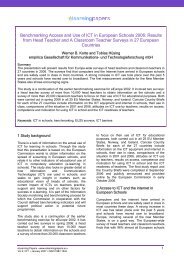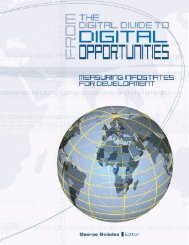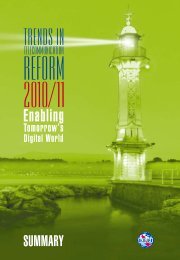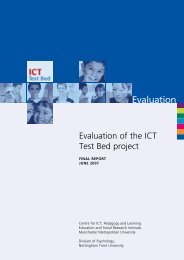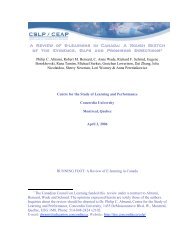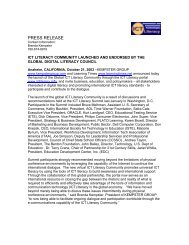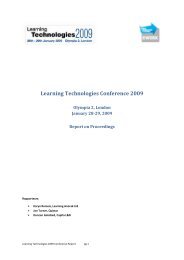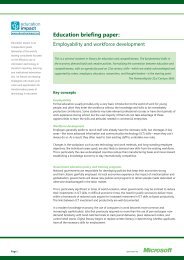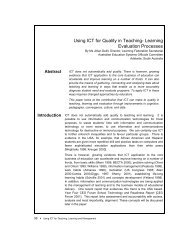147 pages pdf - ICT Digital Literacy
147 pages pdf - ICT Digital Literacy
147 pages pdf - ICT Digital Literacy
Create successful ePaper yourself
Turn your PDF publications into a flip-book with our unique Google optimized e-Paper software.
Hey, Who Moved My Administration & Support?<br />
#623: Make It Easy On Yourself: Aim For Consistent Processes<br />
Save creativity for the message. Methodology and infrastructure should drive everything else. If your<br />
courses are structured in a consistent way, then any developer should be able to move freely in and out of<br />
any course. (A savvy user can also do the same.) We run a performance support site. All the content is<br />
mapped on the Intranet in the same exact structure - so much so that when the tool is demonstrated, I<br />
simply replace the system name in the URL with another and all of the content changes with it. It also<br />
works for a developer as the ability to edit and repair a course requires little effort in understanding how it<br />
was built. For example, if the table of contents is broken, that file has the same name, location, and format<br />
as it would in any other course.<br />
Scott Davis<br />
Bose Corporation<br />
#624: Customer Support Cycle: Don't Get Locked In<br />
Be alert for changing conditions. During the training associated with the initial deployment of a new system,<br />
technology or business process, classroom training may be optimal. During the sustainment phase, e-<br />
Learning may be a better fit. Watch out for the converse, maintaining e-Learning materials after the initial<br />
go-live which may be less effective than shifting at that point to on-the-job-training.<br />
Bruce Jackson<br />
Resource Consultants, Inc.<br />
#625: The 80/20 Rule Process (Or Really, For Anything)<br />
Sometimes, a little people engineering can save a lot of time and effort. If you are going to<br />
spend 80% of your effort trying to get the last 20% correct, that is a poor use of resources.<br />
Tom Pears<br />
#626: A Client Is a Client Is a Client<br />
Treat your internal clients as you would external clients - be flexible, but firm.<br />
Bernadette McIntosh-Estep<br />
Country Insurance and Financial Services<br />
#627: Planning For Accessibility Outside The CMS<br />
Provide a course homepage outside of the Course Management System. This homepage<br />
should include a link to the online course login page, a copy of the syllabus, as well as<br />
instructor's contact information. Students who can't get logged into the course need a way to<br />
reach the instructor! And since most CMS software do not include URL checkers, for each<br />
module include an "additional sources" reference list which is an HTML page housed on another<br />
server that can be easily checked by students.<br />
Karla Embleton<br />
Iowa State University<br />
#628: "Formula" for Naming Conventions<br />
Do not use long course names. Long names encumber the search process when a user is<br />
looking for a course. Also, they often present display challenges by requiring scrolling or small<br />
fonts. A course name should succinctly state the main topic and goal or feature. The course<br />
name, ""e-Learning"", for example, doesn't give enough information, whereas the course name,<br />
"e-Learning: How to initiate a successful program at your organization" is a bit wordy. Using the<br />
form TOPIC: GOAL or FEATURE you get: "e-Learning: Program Design and Deployment"<br />
which is both descriptive and short.<br />
Diane Weir<br />
IBM<br />
701 e-Learning Tips by The MASIE Center www.masie.com 125



